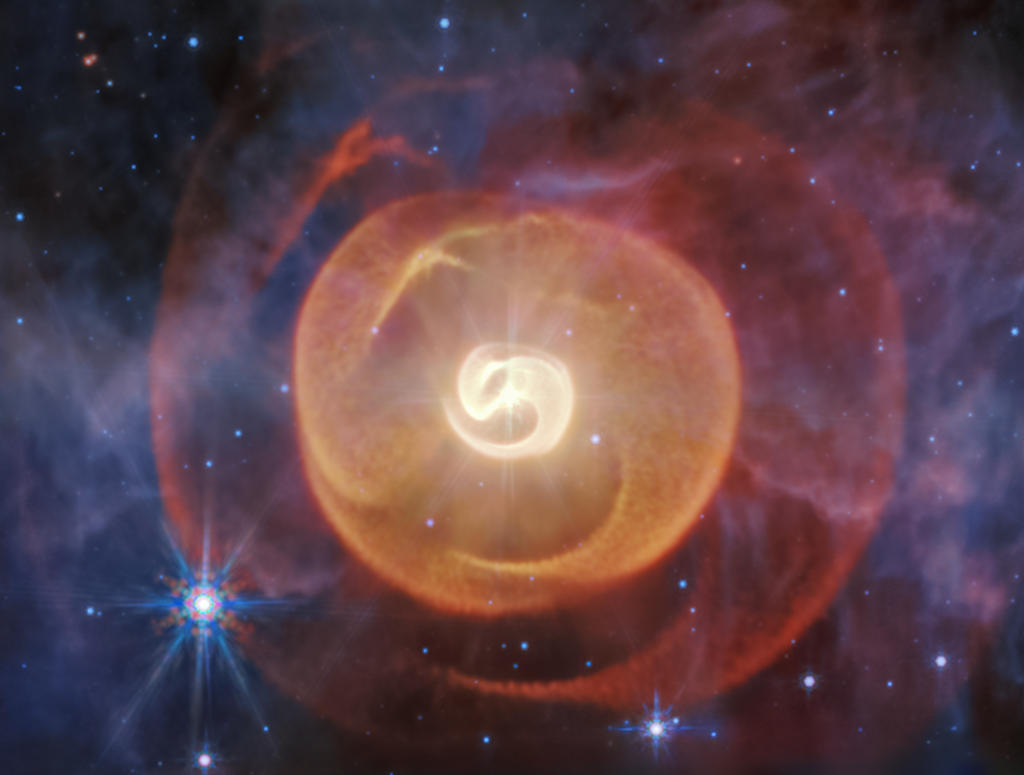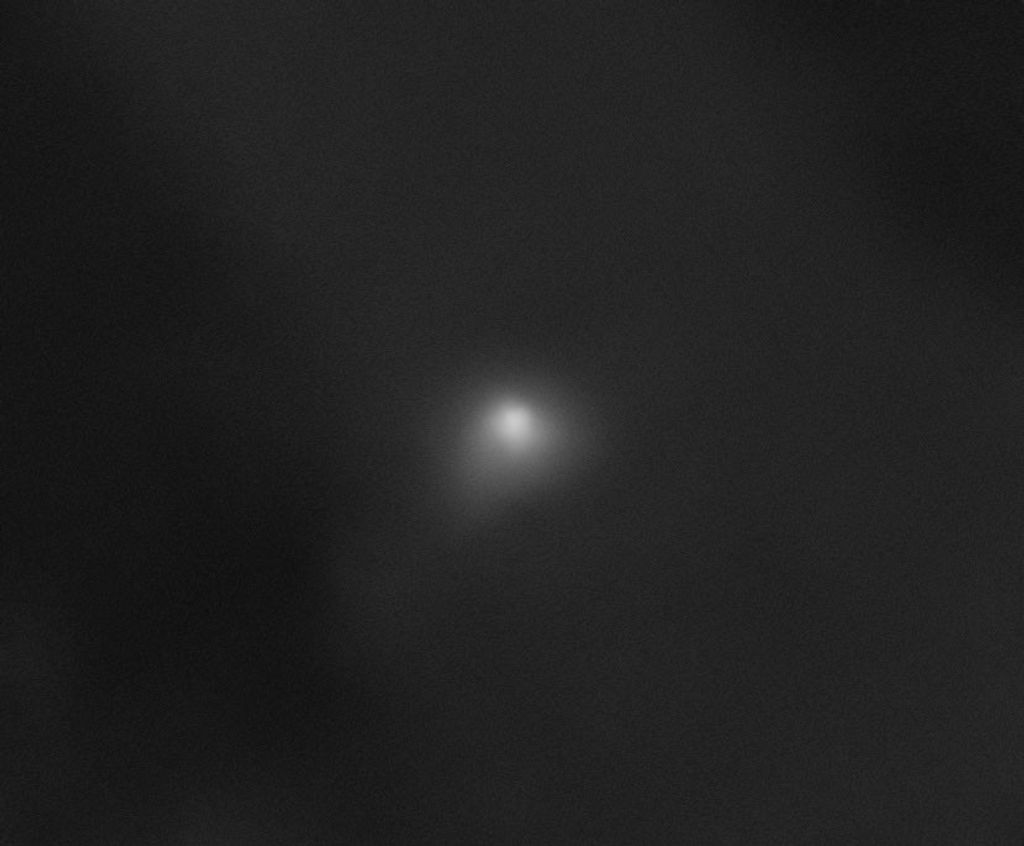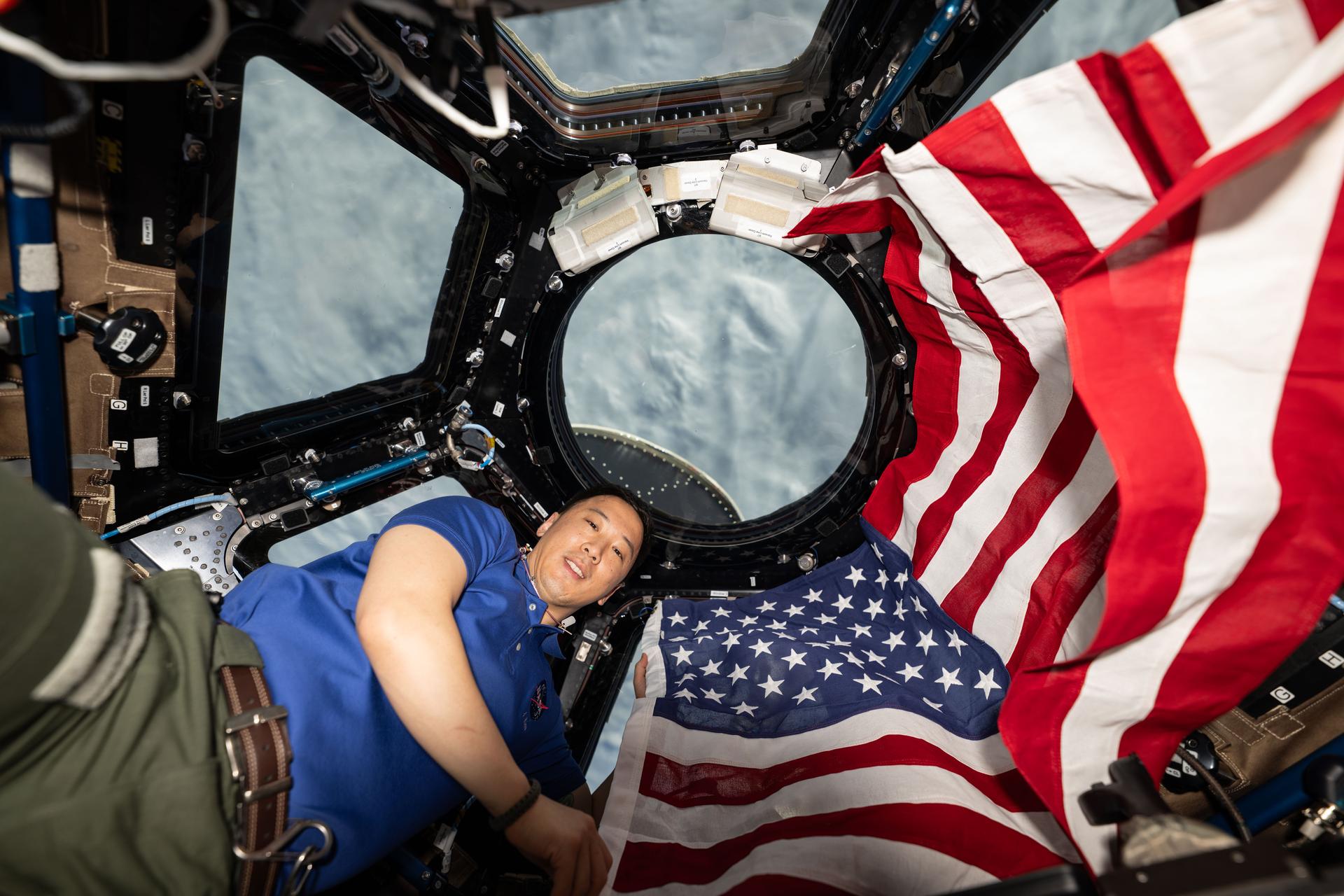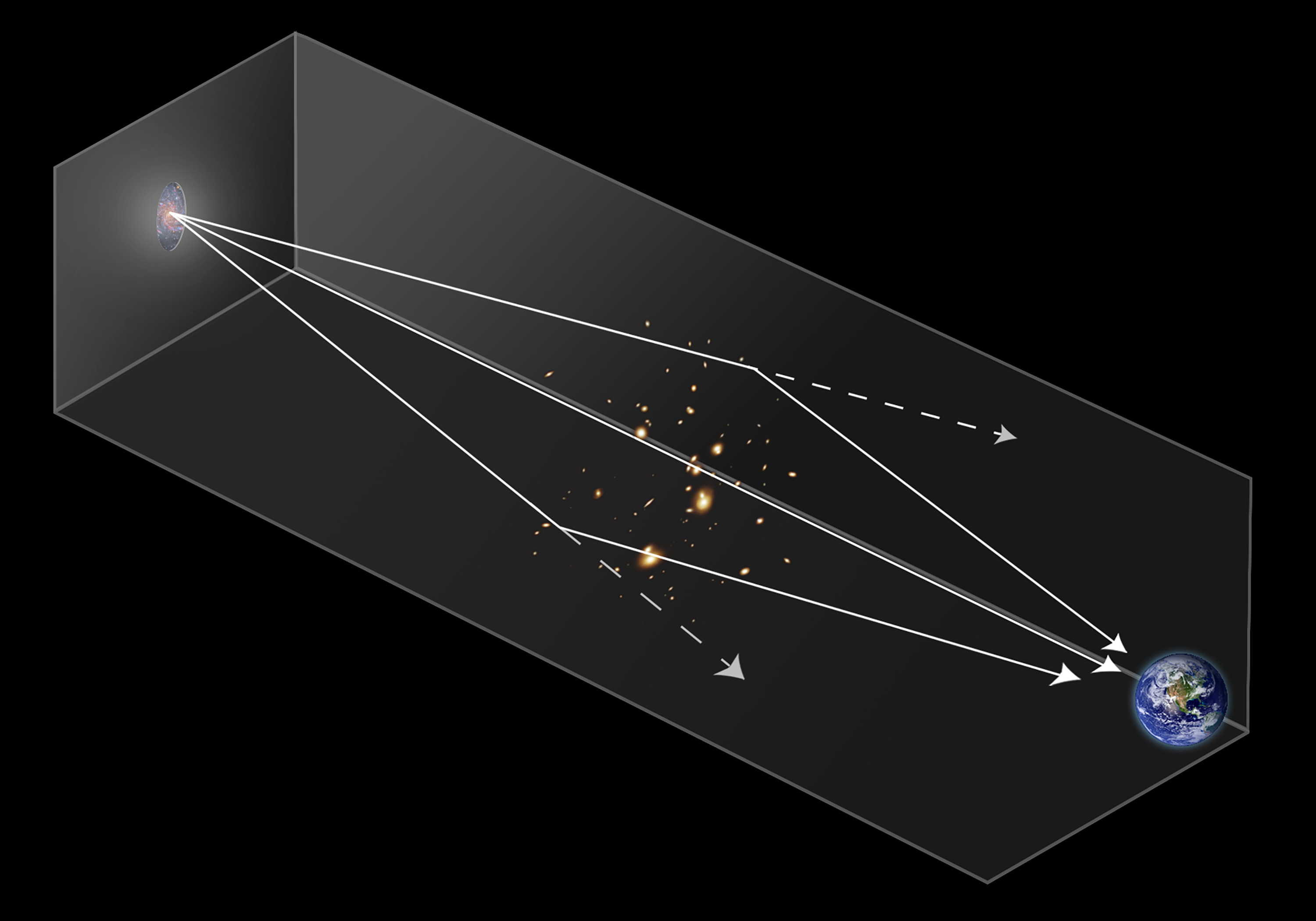1 min read
Hubble Frontier Field Abell 2744

This long-exposure Hubble Space Telescope image of massive galaxy cluster Abell 2744 shows some of the faintest and youngest galaxies ever detected in space. Abell 2744, located in the constellation Sculptor, appears in the foreground of this image. It contains several hundred galaxies as they looked 3.5 billion years ago. The immense gravity in Abell 2744 acts as a gravitational lens to warp space and brighten and magnify images of nearly 3,000 distant background galaxies. The more distant galaxies appear as they did longer than 12 billion years ago, not long after the big bang.
New research shows that the James Webb Space Telescope could potentially detect the first stars and black holes in the universe, if they are gravitationally lensed by a cluster like Abell 2744. A very precise alignment of the cluster and background star would be needed, so Webb would need to observe a number of clusters repeatedly for the best chance of success.
About the Object
- R.A. PositionR.A. PositionRight ascension – analogous to longitude – is one component of an object's position.00h 14m 19.5s
- Dec. PositionDec. PositionDeclination – analogous to latitude – is one component of an object's position.-30° 23' 19.18"
- ConstellationConstellationOne of 88 recognized regions of the celestial sphere in which the object appears.Sculptor
- DistanceDistanceThe physical distance from Earth to the astronomical object. Distances within our solar system are usually measured in Astronomical Units (AU). Distances between stars are usually measured in light-years. Interstellar distances can also be measured in parsecs.Redshift: z=0.308
About the Data
- Data DescriptionData DescriptionProposal: A description of the observations, their scientific justification, and the links to the data available in the science archive.
Science Team: The astronomers who planned the observations and analyzed the data. "PI" refers to the Principal Investigator. - InstrumentInstrumentThe science instrument used to produce the data.HST>ACS/WFC and HST>WFC3/IR
- Exposure DatesExposure DatesThe date(s) that the telescope made its observations and the total exposure time.October 2009; August - November 2013 Exposure Time: 67 hours
- FiltersFiltersThe camera filters that were used in the science observations.ACS/WFC: F435W (B), F606W (V), F814W (I) WFC3/IR: F105W (Y), F125W (J), F140W (JH), F160W (H)
- Object NameObject NameA name or catalog number that astronomers use to identify an astronomical object.Abell 2744, Pandora's Cluster
- Object DescriptionObject DescriptionThe type of astronomical object.Galaxy Cluster and Gravitational Lens
- Release DateApril 25, 2018
- Science ReleaseNASA’s James Webb Space Telescope Could Potentially Detect the First Stars and Black Holes
- CreditImage: NASA, ESA, HFF Team, Jennifer Lotz (STScI), Matt Mountain (STScI), Anton Koekemoer (STScI)

This image is a composite of separate exposures acquired by the ACS and WFC3 instruments on the Hubble Space Telescope. Several filters were used to sample broad wavelength ranges. The color results from assigning different hues (colors) to each monochromatic (grayscale) image associated with an individual filter. In this case, the assigned colors are: Blue: F435W (B) + F606W (V) Green: F814W (I) + F105W (Y) Red: F125W (J) + F140W (JH) + F160W (H)
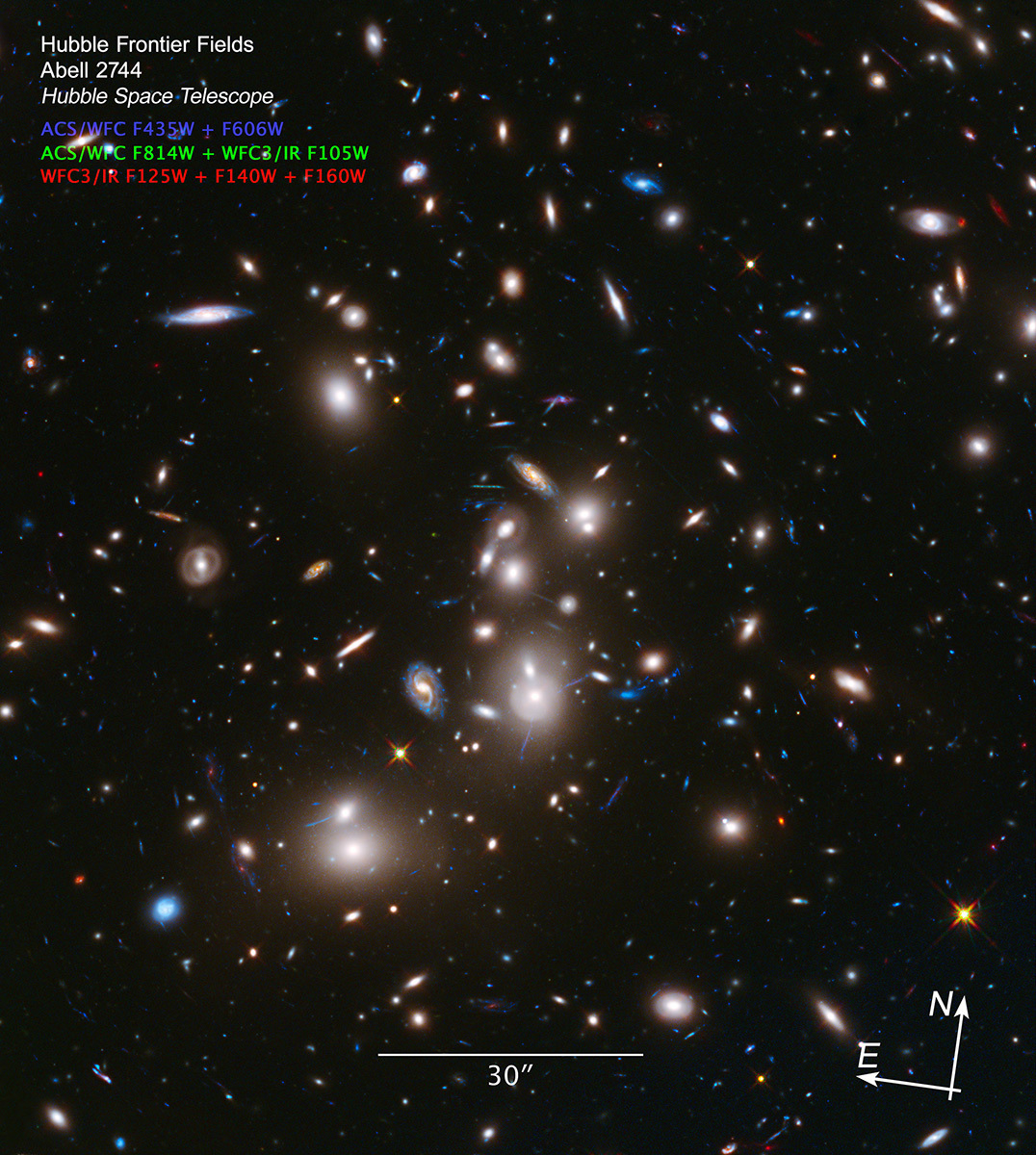
Related Images & Videos
Share
Details
Laura Betz
NASA’s Goddard Space Flight Center
Greenbelt, Maryland
laura.e.betz@nasa.gov
NASA, ESA, HFF Team, Jennifer Lotz (STScI), Matt Mountain (STScI), Anton Koekemoer (STScI)

